All that glitters isn't gold: The legends and myths of some of the most 'cursed' jewellery and artefacts in history
These treasures and trinkets come with quite the ominous history - if you believe the lore, that is...
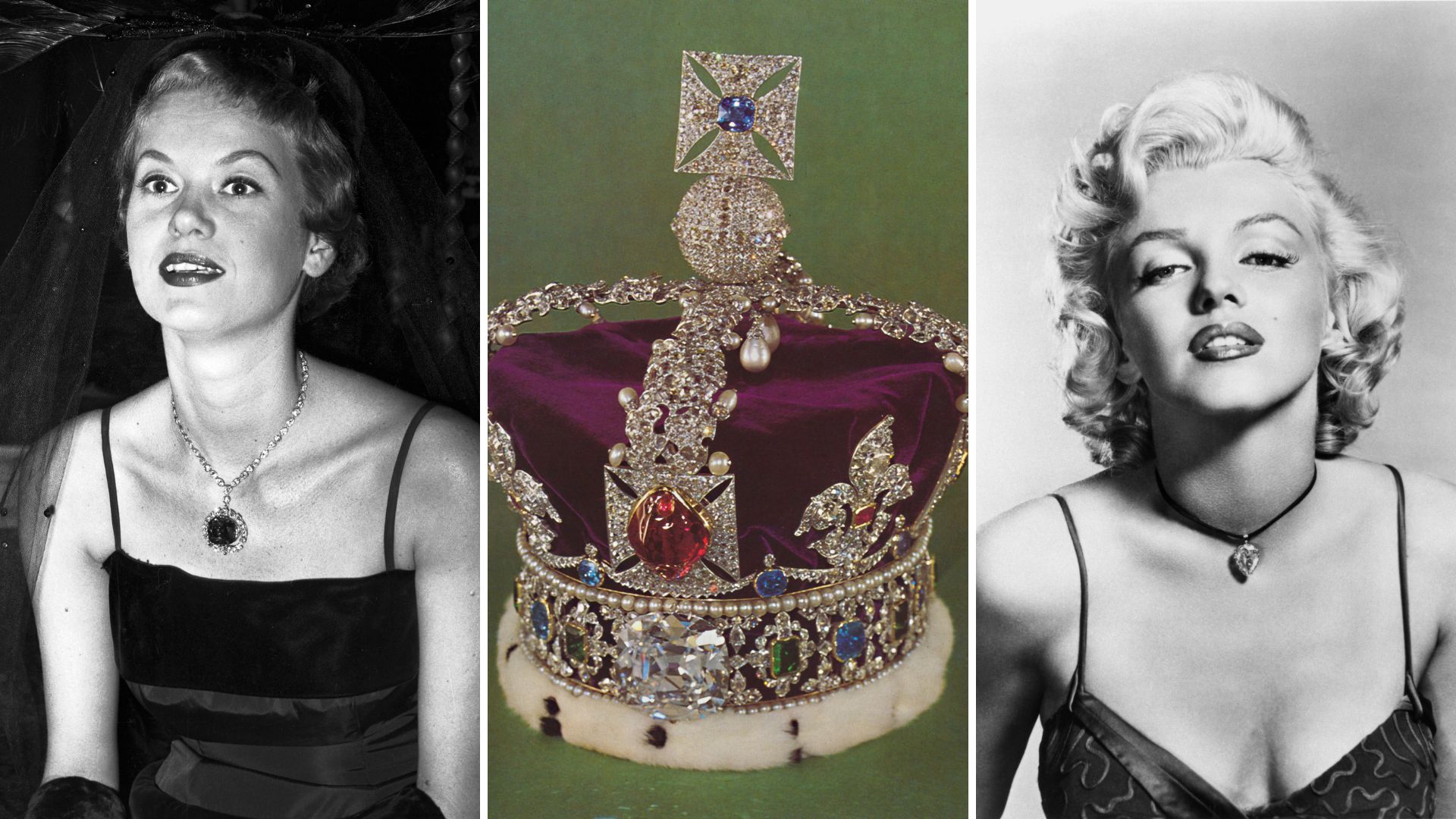

When is a diamond not a girl's best friend? When it's cursed.
It's easy to be dazzled by the Royals' best tiara moments or to look on enviously as people showcase their gems or objects that are steeped in centuries of history. But when things are that old, tall tales of curses and tragedy might inevitably follow.
From the curse that King Charles should be mindful of to places and objects thought to bring bad luck to those who dare to tread, sprinkle some salt over your right shoulder and take a trip through these spooky tales.
The most 'cursed' jewellery and artefacts in history
The Hope Diamond

A truly awe-inspiring 45.52-carat diamond, the Hope Diamond is one of the largest blue diamonds ever discovered, estimated to be worth approximately £263 million ($350 million).
Passed down through generations of historic French royalty, the 'cursed' stone happened to be in the possession of Louis XVI and Marie Antoinette when they faced their end in the French Revolution.
But that's not where the curse ends. The Hope Diamond went on to travel through a long line of merchants and elites, including Evalyn Walsh McLean, who shortly after receiving the diamond, faced the unexpected deaths of her son and daughter, followed by her husband’s admission to a mental hospital.
Perhaps wisely, the Hope Diamond is now housed at the Smithsonian Institution.
Sign up to our free daily email for the latest royal and entertainment news, interesting opinion, expert advice on styling and beauty trends, and no-nonsense guides to the health and wellness questions you want answered.
The Black Orlov
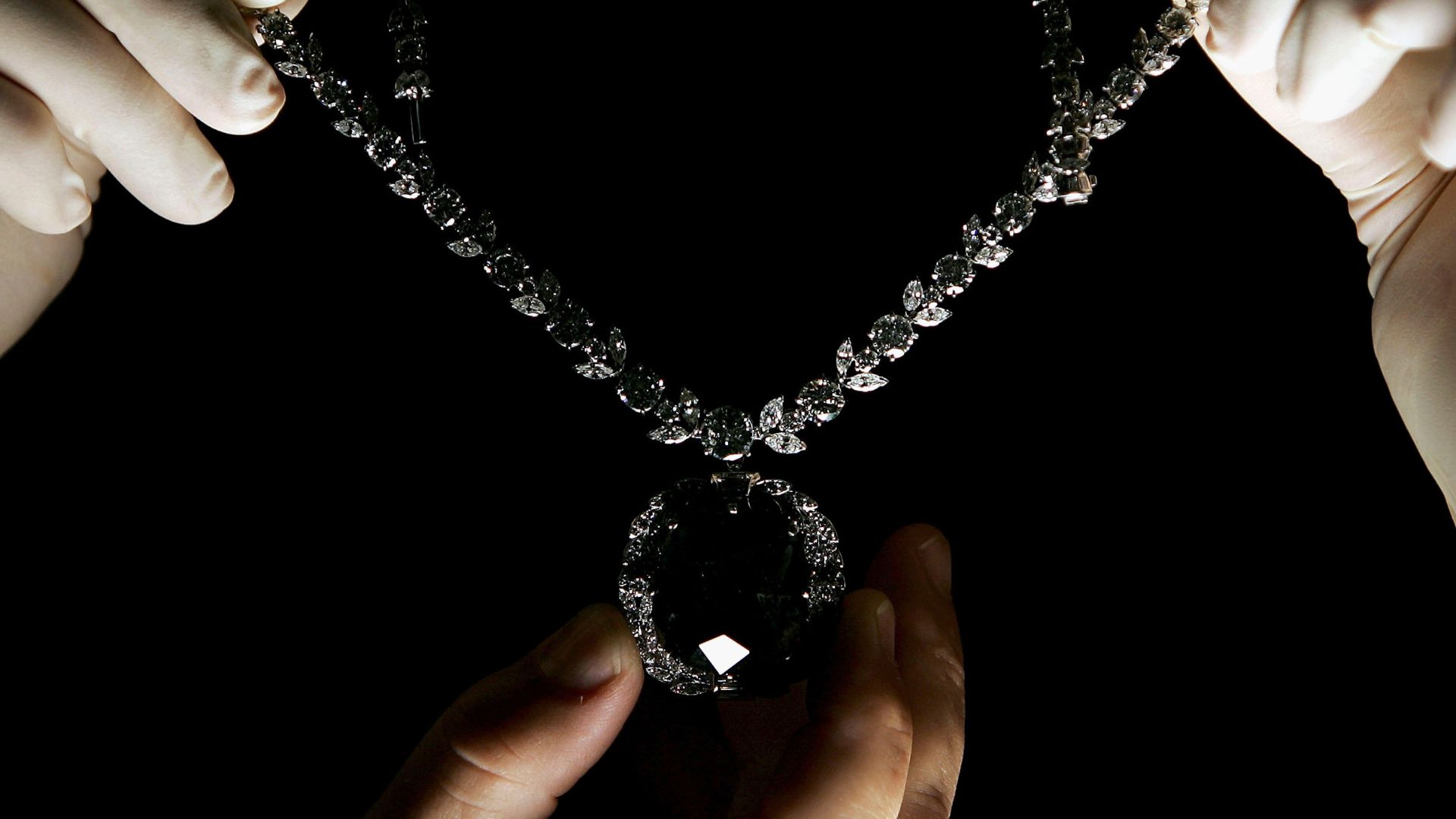
Sometimes known as the Eye of Brahma Diamond, the Black Orlov is a magnificent 67.50-carat black diamond that's believed to have been stolen from the ancient statue of a Hindu god.
After bringing the Black Orlov to New York City in 1932, the thief, a diamond dealer, died by suicide. The diamond would later come into the possession of a pair of Russian princesses, who, tragically, also took their own lives.
The Delhi Purple Sapphire
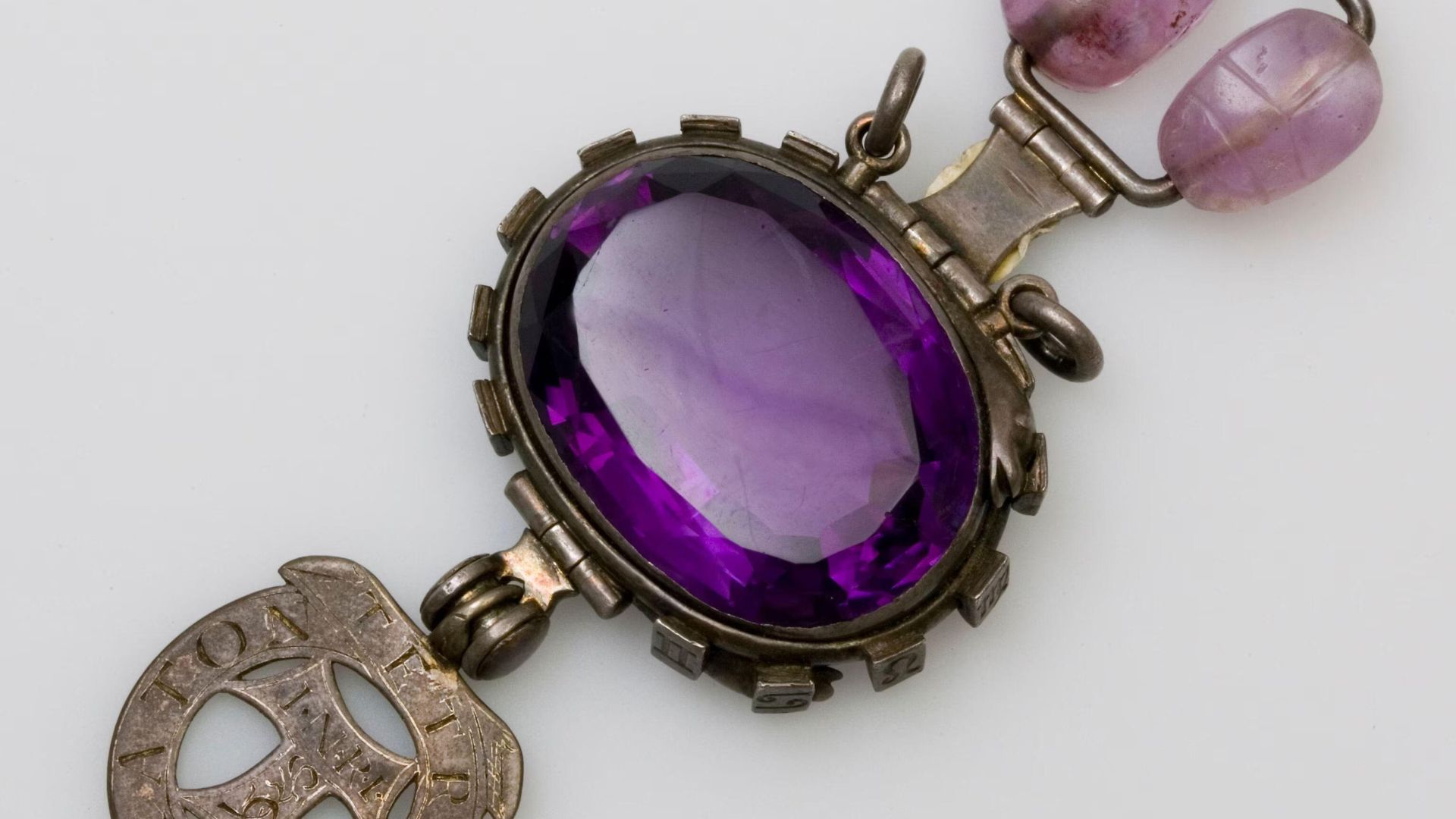
Also known as the Gem of Sorrow, which should be the first warning, this mysterious stone is rumoured to have been stolen by a British soldier from the Temple of Indra, in Kanpur, India, during the Mutiny of 1857.
The stone eventually found itself in the possession of scientist Edward Heron-Allen in 1890. And despite being logical, he soon succumbed to the curse. Facing misfortunes, he tried to give it away - but it was always returned. After giving it to a singer, she reportedly lost her voice right after. And when he threw it in a canal, it was returned three months later.
Writing that it was "accursed and is stained with the blood, and the dishonour of everyone who has ever owned it," he kept it locked away in seven boxes and surrounded by good luck charms.
In 1944, Heron-Allen died. His daughter sent it away to the Natural History Museum. There it stayed until 1972, until curator Peter Tandy uncovered the sapphire and a letter warning, "Whoever opens this box, do whatever you want with it. My advice, however is to throw it into the sea."
The trumpets of Tutankhamun

Most would have heard of the curses bestowed upon those who excavate Egyptian tombs, especially of legendary kings like Tutankhamun.
One of the most baffling of the treasures taken from Tutankhamun's tomb is two trumpets.
It is said that every time they have been blown since the discovery, a war has started.
The trumpets were stolen along with several other items during the 2011 Egyptian Revolution, and when they were recovered a few months later, Egyptologist Hala Hassan told the media that a museum staff member had blown one of the trumpets just a few days before the revolt started. It's also on record that the BBC was allowed to record the sound of the trumpets in 1939, shortly before the beginning of World War II.
The Koh-i-Noor Diamond
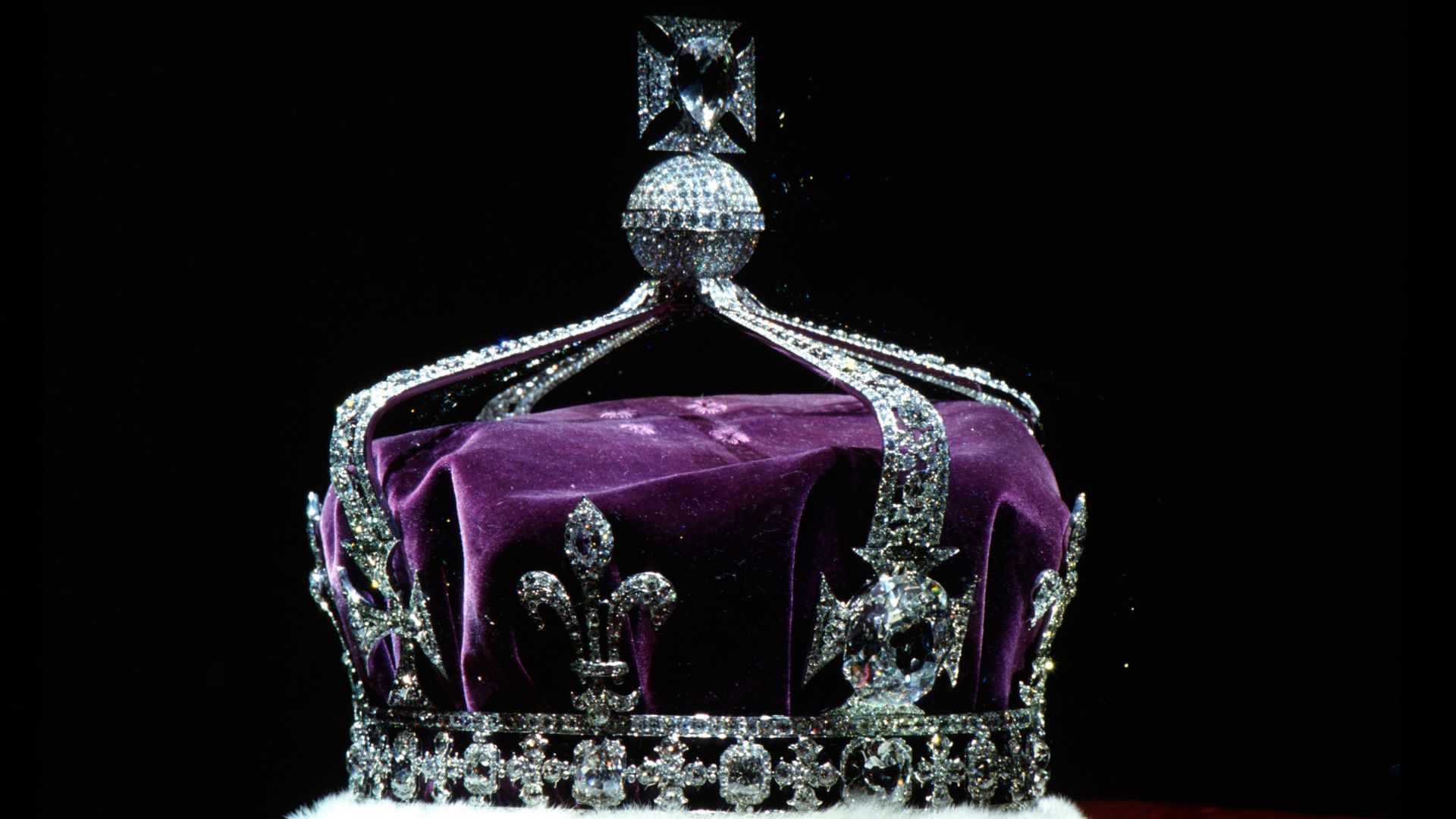
Terrible news for King Charles, as the Koh-i-Noor diamond, which features in the priceless Crown Jewels, is said to have a curse that only affects male owners.
The 186-carat diamond, which sits atop the Imperial State Crown, is said to have brought ill luck to male dynasties over the centuries before it passed to the British Royal Family.
A Hindu description of the diamond warns that "he who owns this diamond will own the world, but will also know all its misfortunes. Only God or woman can wear it with impunity."
Hesse Strawberry Leaf Tiara

Originally commissioned in 1861 by Prince Albert for his daughter, Alice, the Strawberry Leaf Tiara carries a sad history.
After receiving the crown, Princess Alice and her husband, Louis IV of Hesse and by Rhine, experienced the loss of two children, and Alice herself would die tragically young from diphtheria.
Inheriting the tiara next, Princess Cecilie of Greece and Denmark, sister to the late Prince Philip, would go into premature childbirth during a plane journey to the UK. The chaos caused the plane to crash, killing Cecilie, her husband and their children.
The Strawberry Leaf Tiara, however, was found in the wreckage unscathed. The tiara now belongs to the Hessian House Foundation, but it has been retired from being worn in public.
Loot from Pompeii
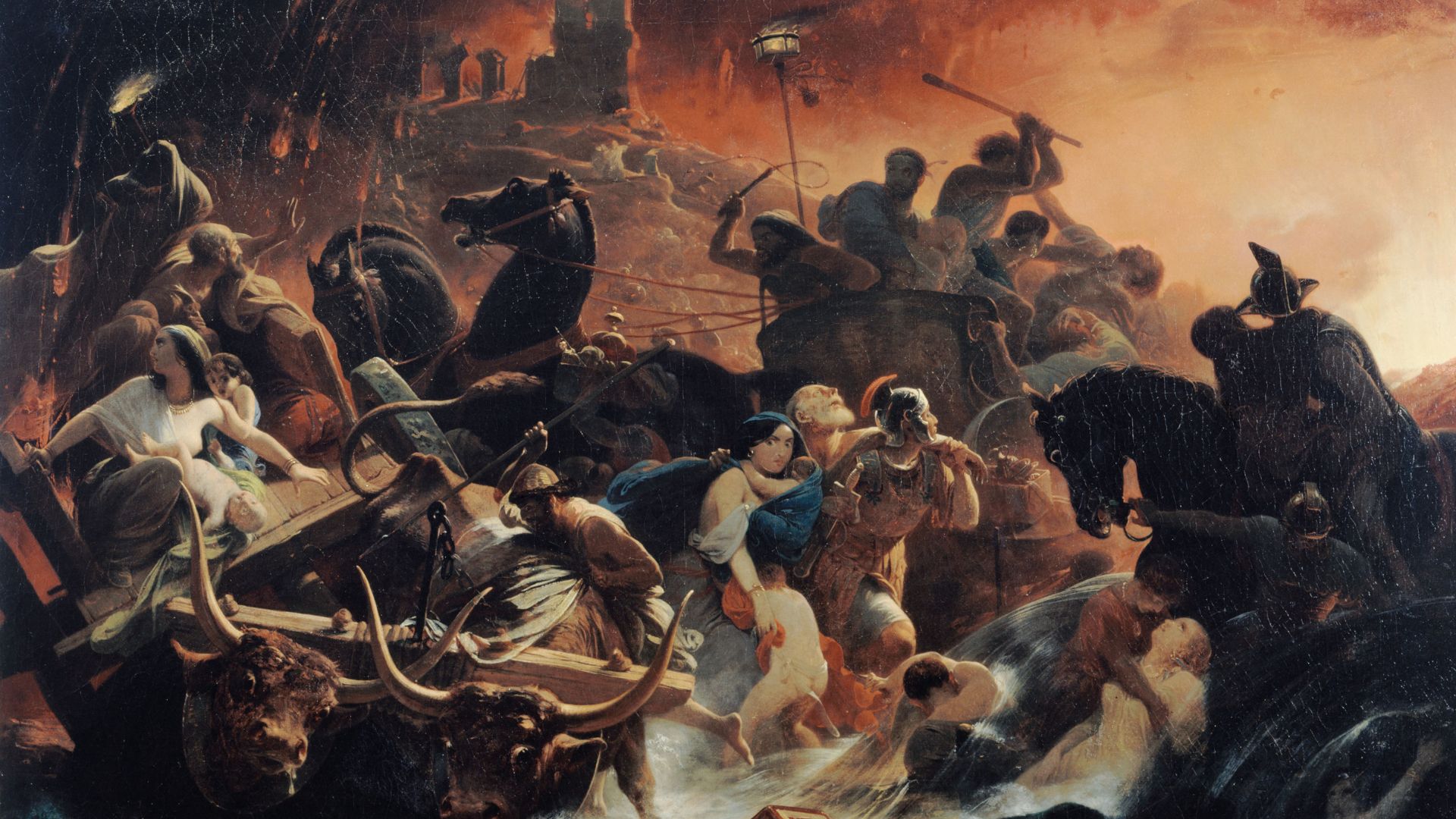
The tale of Pompeii is one of history's worst natural disasters, with the Roman city completely devastated and buried after the eruption of Mount Vesuvius in 79 A.D.
Perhaps confusingly, some tourists try to take things from the historic site today. But what nearly always happens is they end up sending back their artefacts, citing tragedies and bad luck.
Per Conde Nast Traveller, the site's archaeological superintendent, Massimo Osanna, told The Italian Tribune, "They write that the stolen pieces have brought them nothing but trouble. They say they can trace back all their family troubles to their theft at Pompeii."
The Florentine Diamond
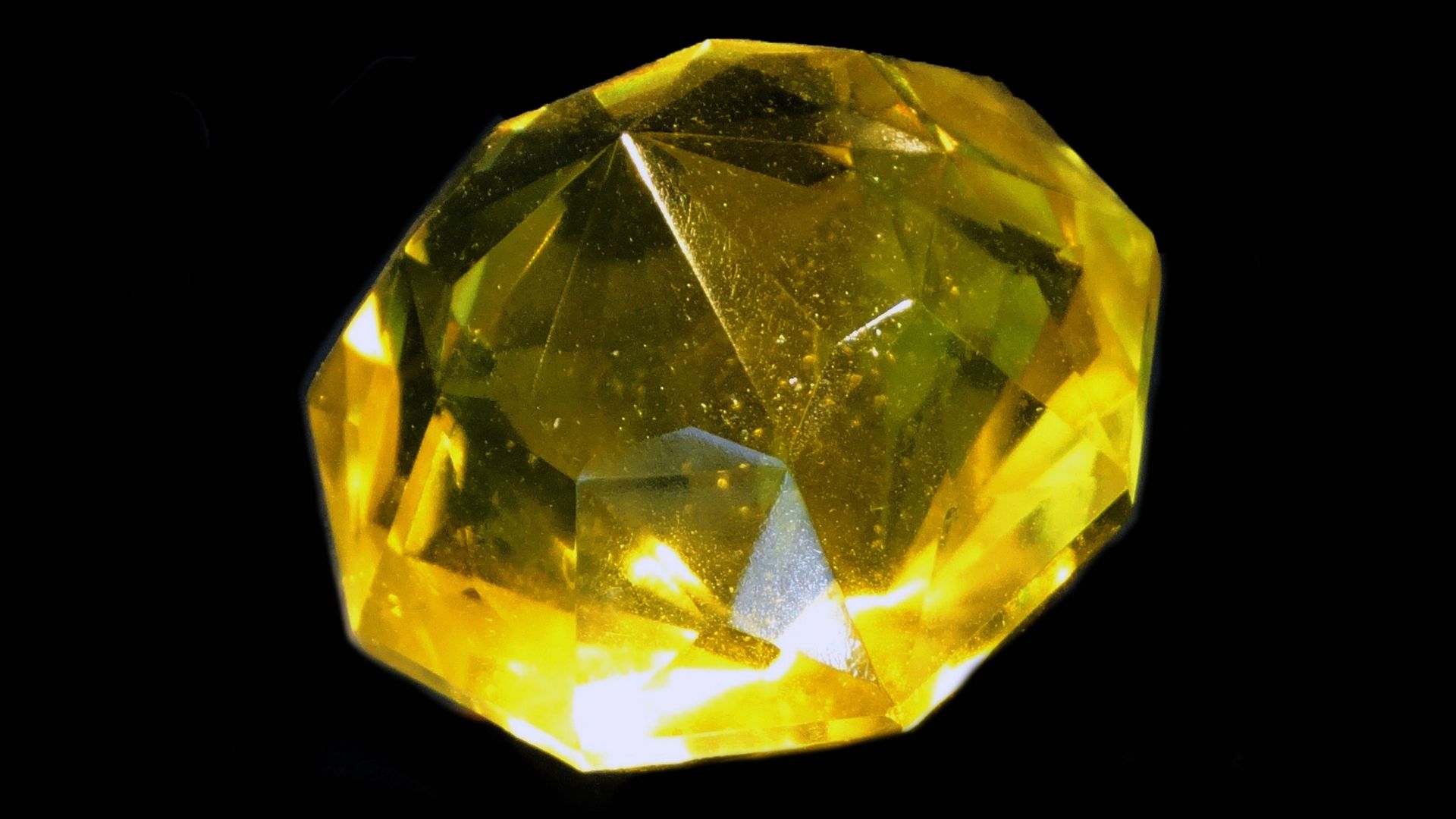
Not so much 'cursed' as unlucky, the Florentine Diamond is a devastating tale of a lost treasure, one that remains unsolved.
An exquisite 137-carat stone that belonged to the powerful Medici Family, the origin legend of this stone has it that Charles the Bold, Duke of Burgundy, is said to have been wearing it when he fell in battle.
Passing down centuries, when the last of the Medicis died, it passed to Vienna through the marriage of Francis Stephan of Lorraine to Empress Maria Theresa and was placed in the Habsburg Crown Jewels in the Hofburg, Vienna. After the fall of the Austrian Empire in World War I, the Florentine joined the family in exile, and this is where it was thought to have been stolen.
Its whereabouts after that are unknown, with some unfounded reports suggesting it could have been recut and made into other iconic stones, including Tiffany's iconic Yellow Diamond.
The Regent Diamond
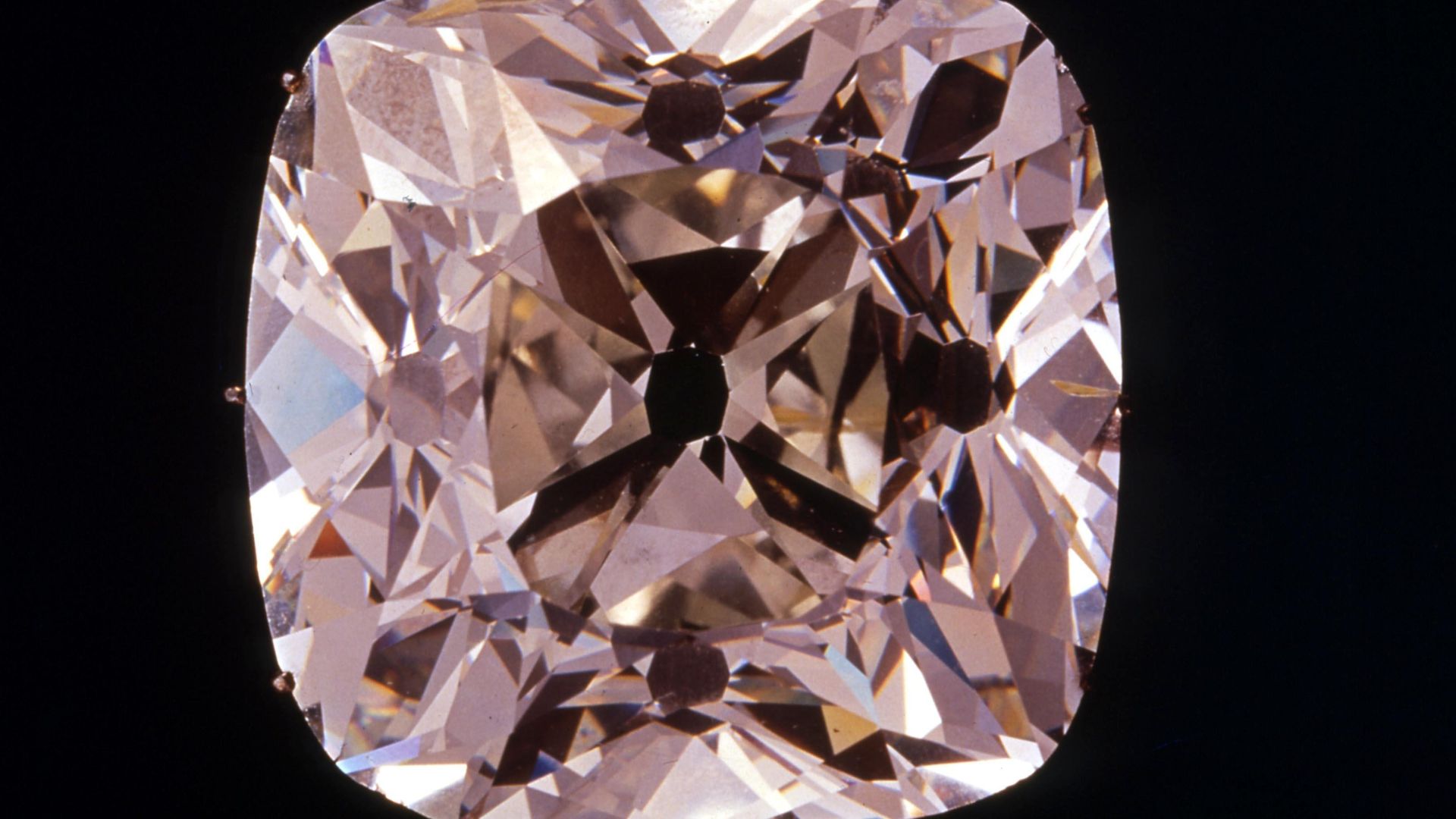
Currently owned by the French state and on display at the Louvre, the Regent Diamond's dazzling 140.64 carats disguise a rather murky past.
Legend has it that, in the 18th century, an Indian slave discovered the stone and carried it away in a self-inflicted leg wound. An Englishman who promised to help him smuggle the diamond out of India instead betrayed him and took the stone.
The French Regent Philippe II of Orleans, for whom it is named, acquired the 140.6-carat cursed diamond. After disappearing around the time of the French Revolution, the stone would resurface on Napoleon I’s sword. He famously lost the Battle of Waterloo and faced exile after, dying on a tiny island.
Le Beau Sancy
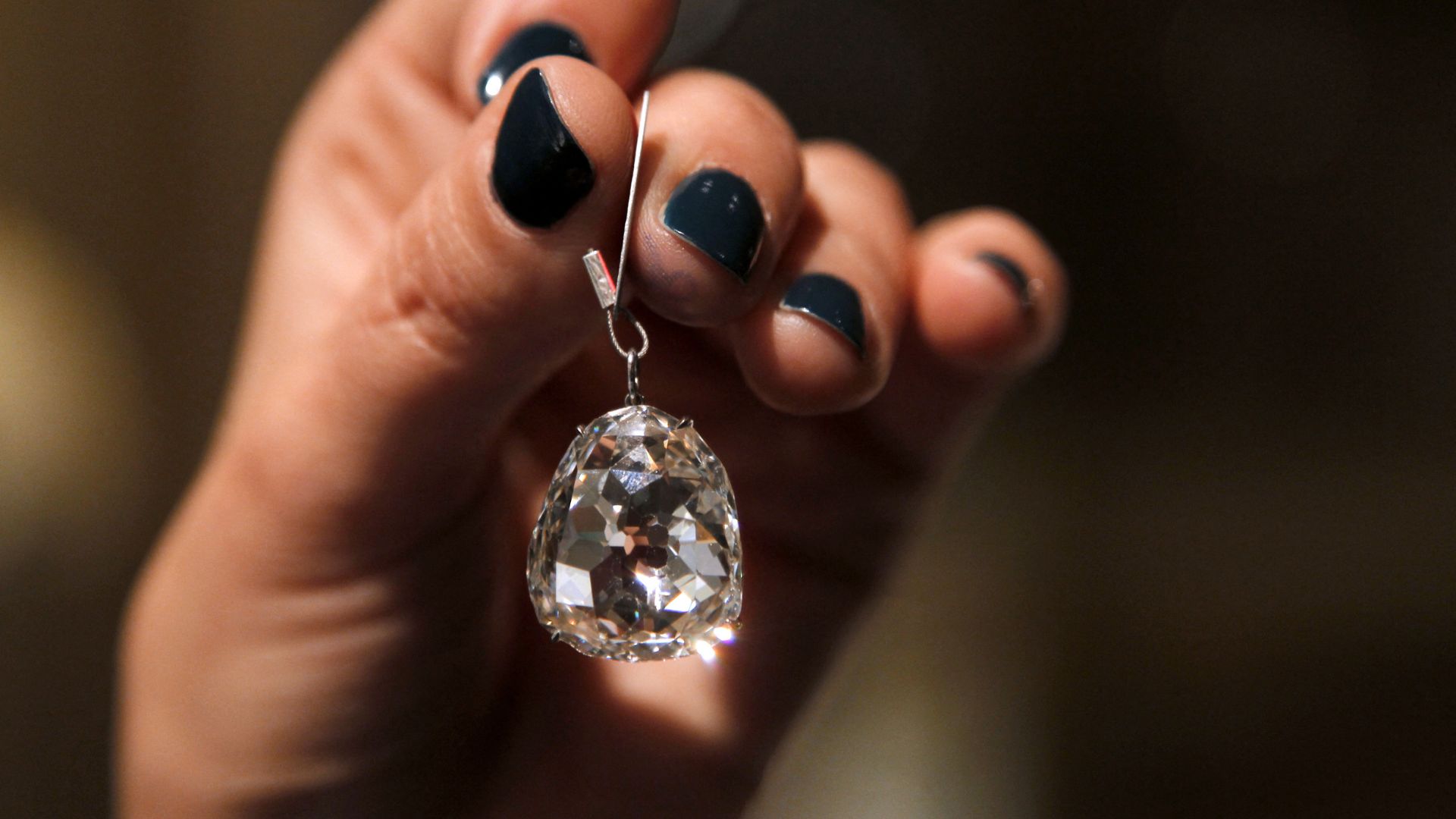
Once considered the largest white diamond in the Western world, the Sancy diamond was a tremendous 55.23-carat stone cut into a brilliant cut that resembled a shield.
Believed to have brought bad luck to many owners, it even had a gruesome beginning. In the early 1600s, the diamond was named for its then-owner Nicolas de Harlay, Seigneur de Sancy, who served as King Henry IV’s finance minister. When Sancy’s loyal servant was delivering the diamond to its next owner, King James I, he was attacked by robbers, but decided to swallow the stone to keep hold of it. The man was killed anyway, and the diamond was cut out of his body.
Three of its later royal owners, including Burgundy’s Charles the Bold, England’s Charles I, and France’s Louis XVI, all faced misfortune and gruesome deaths. The diamond is now owned by the Louvre.
The Black Prince’s Ruby
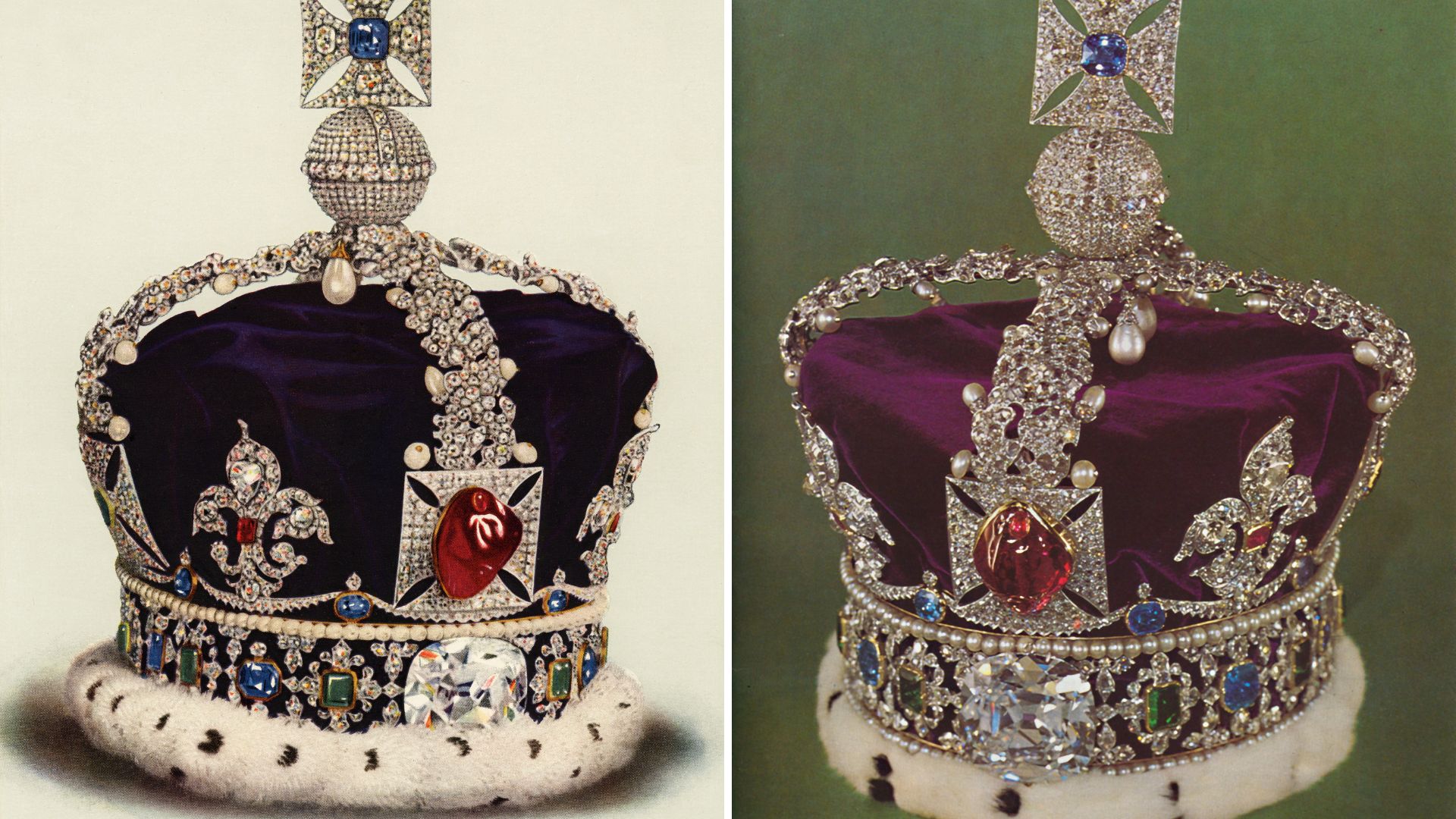
The Black Prince's Ruby, which sits at the front of the Imperial State Crown of the United Kingdom, weighs 170 carats and, despite the name, is not actually a ruby. It's a large, red spinel.
According to legend, the stone was given to the English monarchy in 1367 by the Spanish king Peter of Castile. He gave it to the then-Prince of Wales, Edward of Woodstock, known as the Black Prince, giving it its name.
A string of deaths has led to the legend of the curse, starting with Don Pedro of Castile, who allegedly stole the gem from a Sultan of Granada and was later executed. The Black Prince, Edward III's son, also owned the ruby and died before inheriting the throne. Henry V also owned it, dying in battle at the time.
Jackie Kennedy's cursed Cartier

Three different women all owned a Cartier watch, and all three women became widows in their 30s.
This is the ominous tale shared by Carole Radziwill - a former Real Housewives of New York star and daughter-in-law of Lee Radziwill, Jackie Kennedy's sister.
Carole told the story on The Moth podcast, revealing that it was Jackie's daily watch when JFK was assassinated in 1963. Later, the watch came to Carole. Carole's husband, Anthony, died of cancer when he was just 40 and Carole was 36.
Carole had given the watch as a gift to a friend named Cassandra. Shortly after gifting the watch, Cassandra's husband was diagnosed with cancer, and he would die when Cassandra was 39.
The lost Irish Crown Jewels

While the Irish Crown Jewels weren't 'cursed' in the traditional sense, they were stolen in 1907 and never recovered. To this day, the location is unknown and the case unsolved.
The Irish Crown Jewels, which included precious stones and badges, were stolen from a safe in the Bedford Tower of Dublin Castle in 1907. Interestingly, the theft took place without any violent or damaging break-in.
The jewels have been estimated to have been worth around £50,000 at the time, and reportedly over £7 million today.
The Ring of Silvianus (which might have inspired J.R.R. Tolkien)
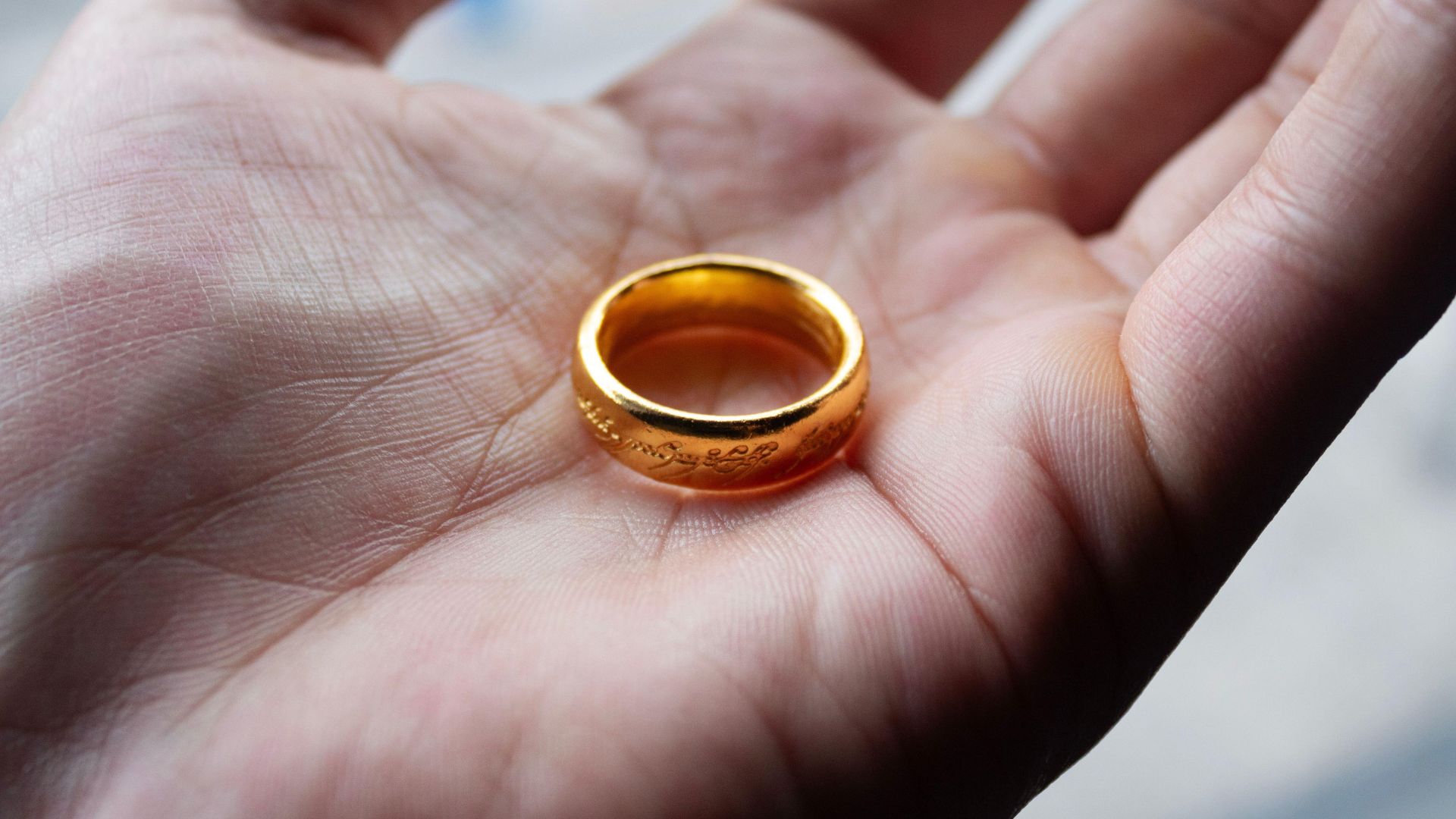
The Ring of Silvianus, sometimes referred to as the Vyne ring, dates back to around the 4th Century AD.
Discovered in a field in England in the 18th century, the ring's origin has been recorded as belonging to a British Roman called Silvianus. It was apparently stolen by a person named Senicianus, upon whom Silvianus called down a curse.
Archaeologist Sir Mortimer Wheeler delved into the history of the ring and the foreboding curse that was found on a tablet, and consulted with Oxford professor JRR Tolkien on the etymology. This is why many believe J.R.R. Tolkien might have been inspired by the ring when he wrote his iconic fantasy novels, The Lord of the Rings and The Hobbit.
The Curse of The Moon of Baroda

If you believe in such things, it's said that the 24.04-carat pear-shaped canary yellow diamond known as the Moon of Baroda brings misfortune and tragedy to anyone who carries it across the sea.
The diamond's origin goes back to the Maharajas of Baroda, the royal family of Gaekwad, for over 500 years. The diamond was apparently sent to Empress Maria Thérèse of Austria, the only female monarch of the Habsburg dynasty and the mother of Marie Antoinette, in 1787 by the family. Maria's reign involved wars and strife, and she contracted smallpox.
The diamond was returned to the family and, in 1860, was fitted into a necklace at the request of the Maharaja of Baroda. Later sold to an unknown buyer, the necklace and the diamond would make a lavish return to the spotlight worn by Marilyn Monroe for the promotion of her film Gentlemen Prefer Blondes.
The lost or sunken gold of the Germans

Not cursed in a supernatural sense, but tinged with great tragedy and darkness, there has long been rumour of a great wealth of treasure buried by the nazis in the hazardous Lake Toplitz, which is in the Austrian Alps.
The idea of a sunken treasure is the stuff of legend, even referenced in a James Bond film (Goldfinger). The inhospitable nature of the water, where only bacteria and worms that can live without oxygen have been found below 20 metres, means that divers have never been lucky in finding anything.
However, to give the rumours some credence, in 1959, investigators recovered £700 million of counterfeit notes from the lake, which Hitler had planned on using to sabotage Britain's economy.
The Amber Room
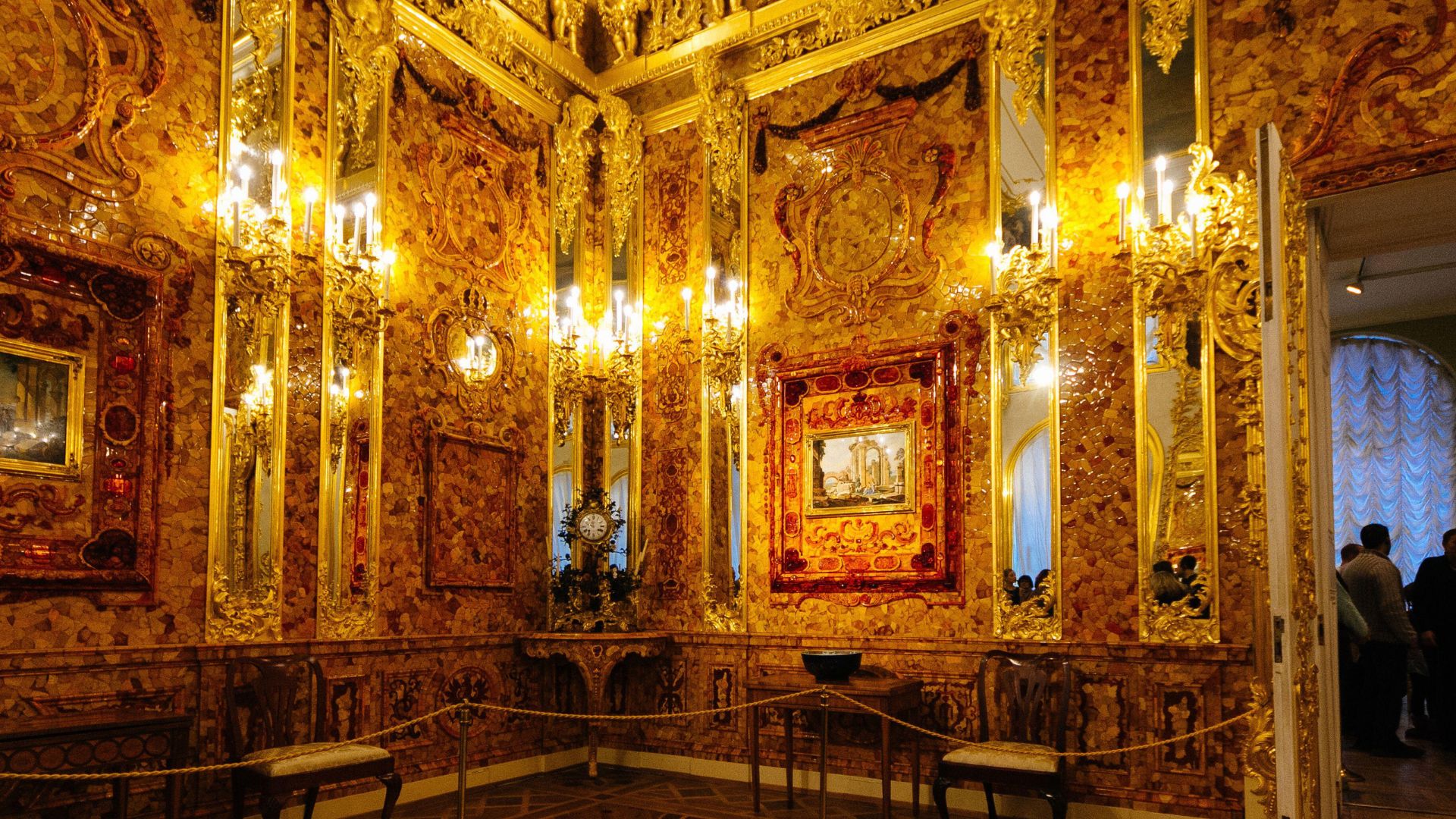
Constructed in the 18th century in Prussia, the Amber Room was a lavish chamber decorated in amber panels, gold leaf and mirrors, located in the Catherine Palace of Tsarskoye Selo near Saint Petersburg.
Another mysterious bit of treasure that went missing without a trace, the opulent room was dismantled and eventually disappeared during World War II. Before its loss, it was considered an Eighth Wonder of the World.
A reconstruction was made, completed in 2003, but the whereabouts of the original priceless room and decor were never known.
The Vladimir Tiara

It was a tiara often seen being worn by the late Queen Elizabeth II, who reigned for a successful and historic 70 years, so just how cursed could the Vladimir Tiara be?
Well, exactly. It's not so much that the tiara was cursed, but the fact it had quite the tragic and tumultuous past.
The Vladimir Tiara was made for Grand Duchess Maria Pavlovna, wife of Grand Duke Vladimir. It consists of intersecting circles set with brilliant diamonds, and each one is hung off a claw-set pendant pearl.
The tiara survived the deadly Russian Revolution, and the Grand Duchess was the last Romanov to escape Russia. She died in exile, never getting reacquainted with her jewels, and the diadem would later be sold to Queen Mary.
The Karun Treasure (or the Lydian Hoard)
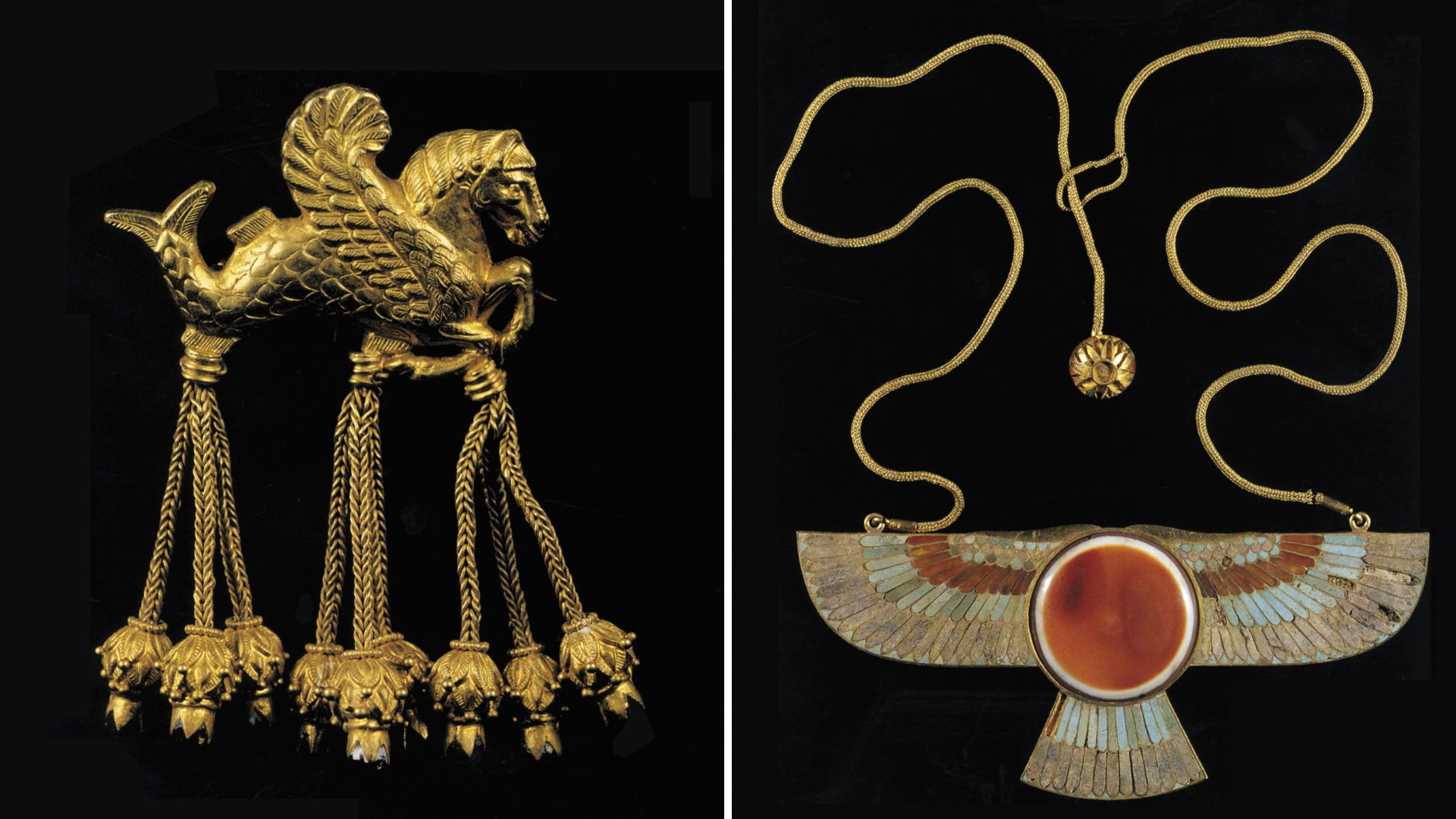
Lydia was a huge Iron Age kingdom which existed from the 15-14th centuries BC to 545 BC. So any treasures from that age are, naturally, highly unusual and rare.
In 1966, a man named Ahmet Bulbul, who lived in the village of Midiki, Uşak, was responsible for uncovering a wealth of Lydian treasures. The impressive treasure was divided and 200 pieces of the collection were sold for about $1.5 million to the Metropolitan Museum of Art.
However, per several sources, legend has it that the seven men who took part in the illegal digs "died violent deaths or suffered great misfortune" and even museum directors who have dealt with the treasures have been arrested for creating fakes and other notorious deeds.
The Opal of Queen Mercedes of Spain
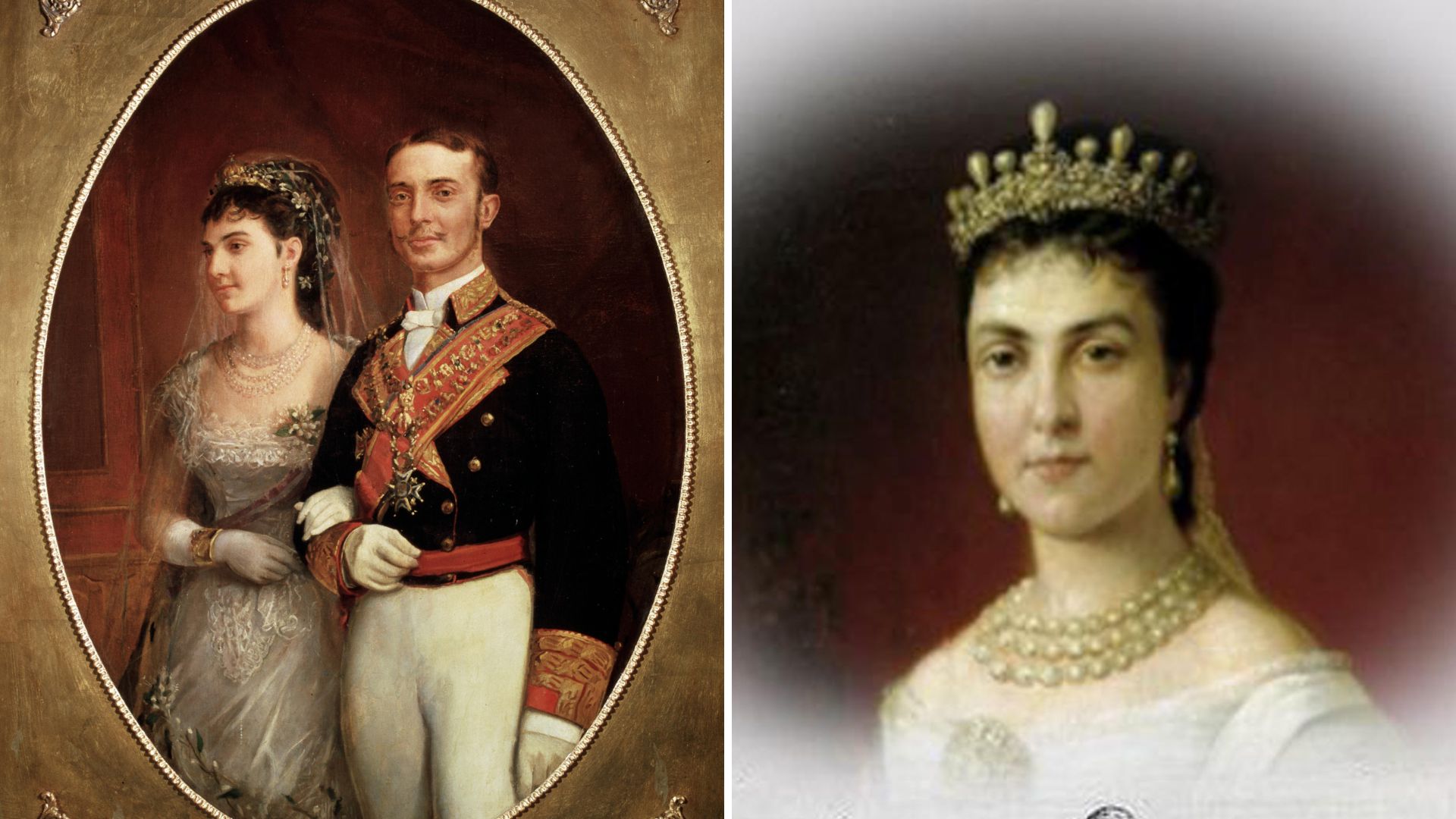
An ancient ring at the centre of a love affair and a curse? Consider us curious!
Dating back to the 1800s, Virginia Oldoini, Countess of Castiglione, was an Italian aristocrat who was considered incredibly beautiful and incredibly connected. Historians suggest she may have had dalliances with King Victor Emmanuel II of Italy, Emperor Napoleon III of France, and King Alfonso XII of Spain.
The countess presented Alfonso with a large opal ring - and this is where the curse begins. Perhaps ill advisedly, Alfonso presented the ring given to him by a potential mistress to his wife, Queen Mercedes of Spain.
Queen Mercedes died just a few months later from typhoid fever. King Alfonso then gave the ring to his grandmother, Queen Maria Christina, who also died mere months after wearing the ring.
The gold of Tolosa/Toulouse
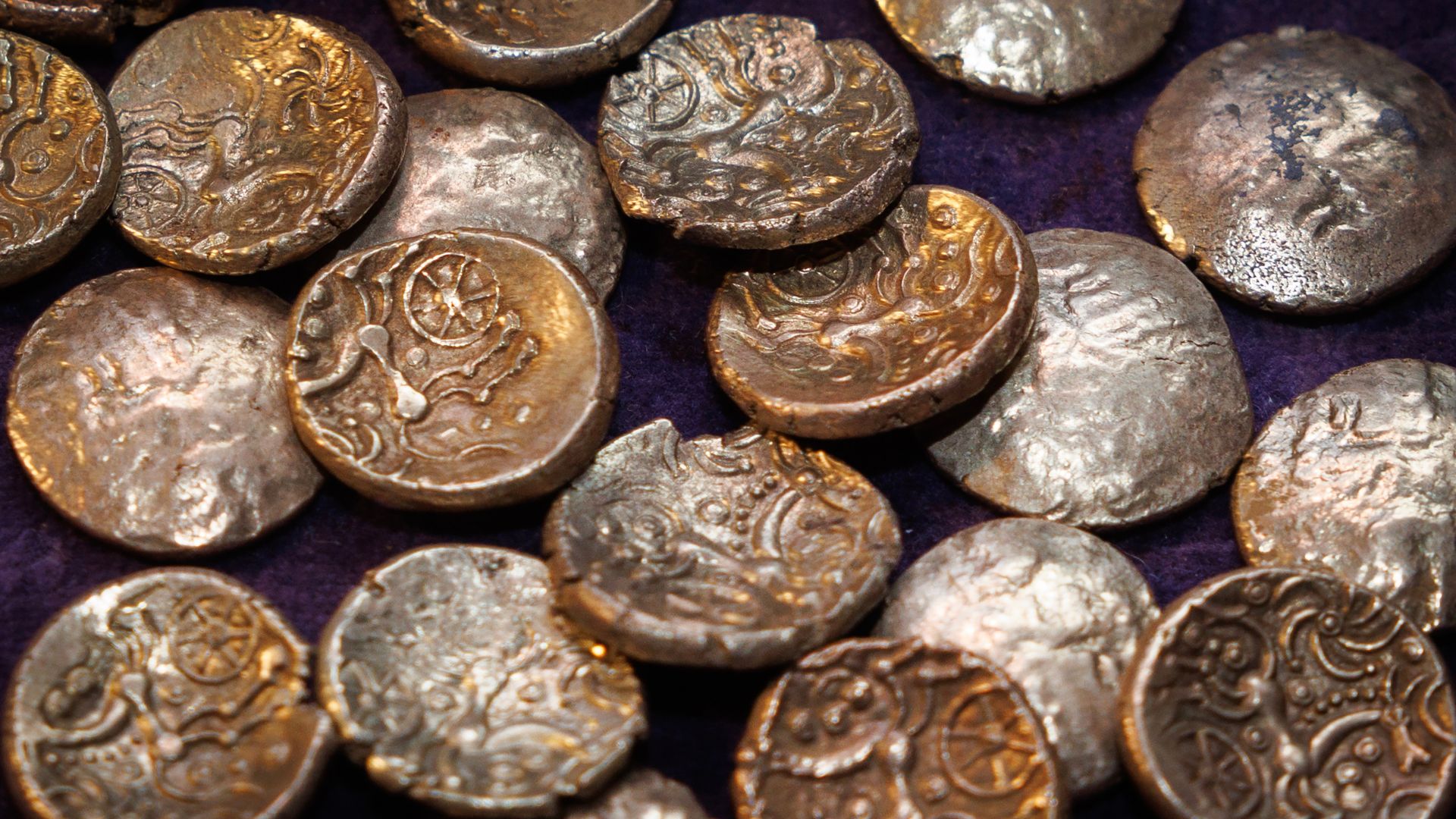
The Gold of Tolosa refers to a historic treasure seized by ancient Romans led by Quintus Servilius Caepio from a town that is known in modern-day terms as Toulouse.
The treasure is thought to date back to Ancient Greek times, and was never found after being taken by the Caepio Romans. But legend has it that all of Quintus Servilius's descendants suffered ill fates. His son was tricked and ambushed and battle, a grandson died tragically young, and his last surviving heir was Marcus Junius Brutus, a name history lovers might be familiar with as the Brutus who would assassinate Julius Caesar and then die at the Battle of Philippi.
Such was the belief in the curse, a Latin proverb was born. 'Aurum habet Tolosanum' translates to 'He has got the gold of Tolosa' and means an ill-got gain will do you no good.
The 'Unlucky Mummy'
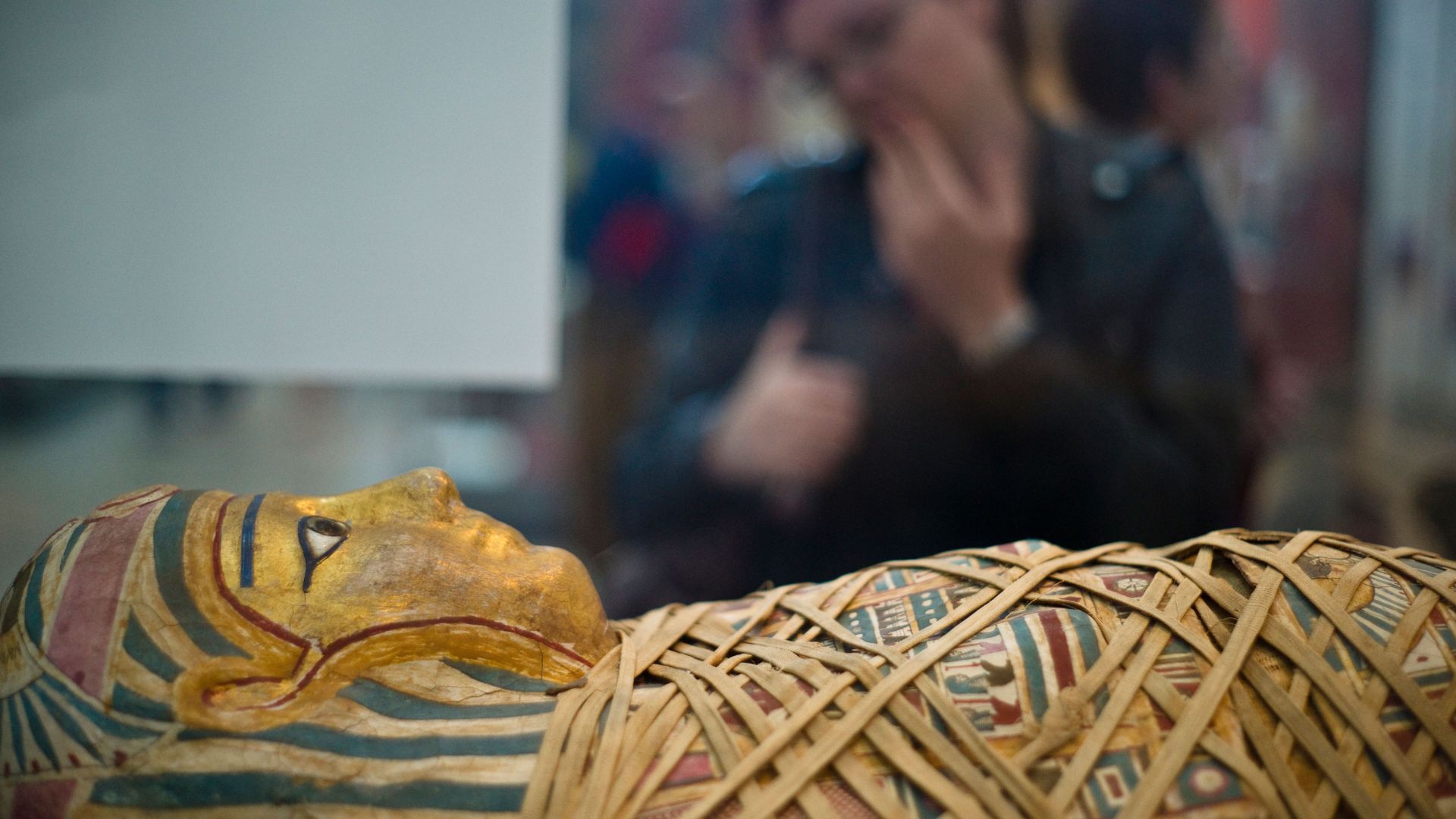
The Unlucky Mummy is an Ancient Egyptian artefact housed in the collection of the British Museum in London.
The name is a giveaway, but this artefact has been at the centre of many myths and speak of curses. The most famous is that the presence of the Mummy might have led to the sinking of the Titanic, as people have stated it was being moved from the British Museum to New York on the doomed ship. This has been proven to be false, but the legend persists.
The Norwegian royal tiara stolen in broad daylight
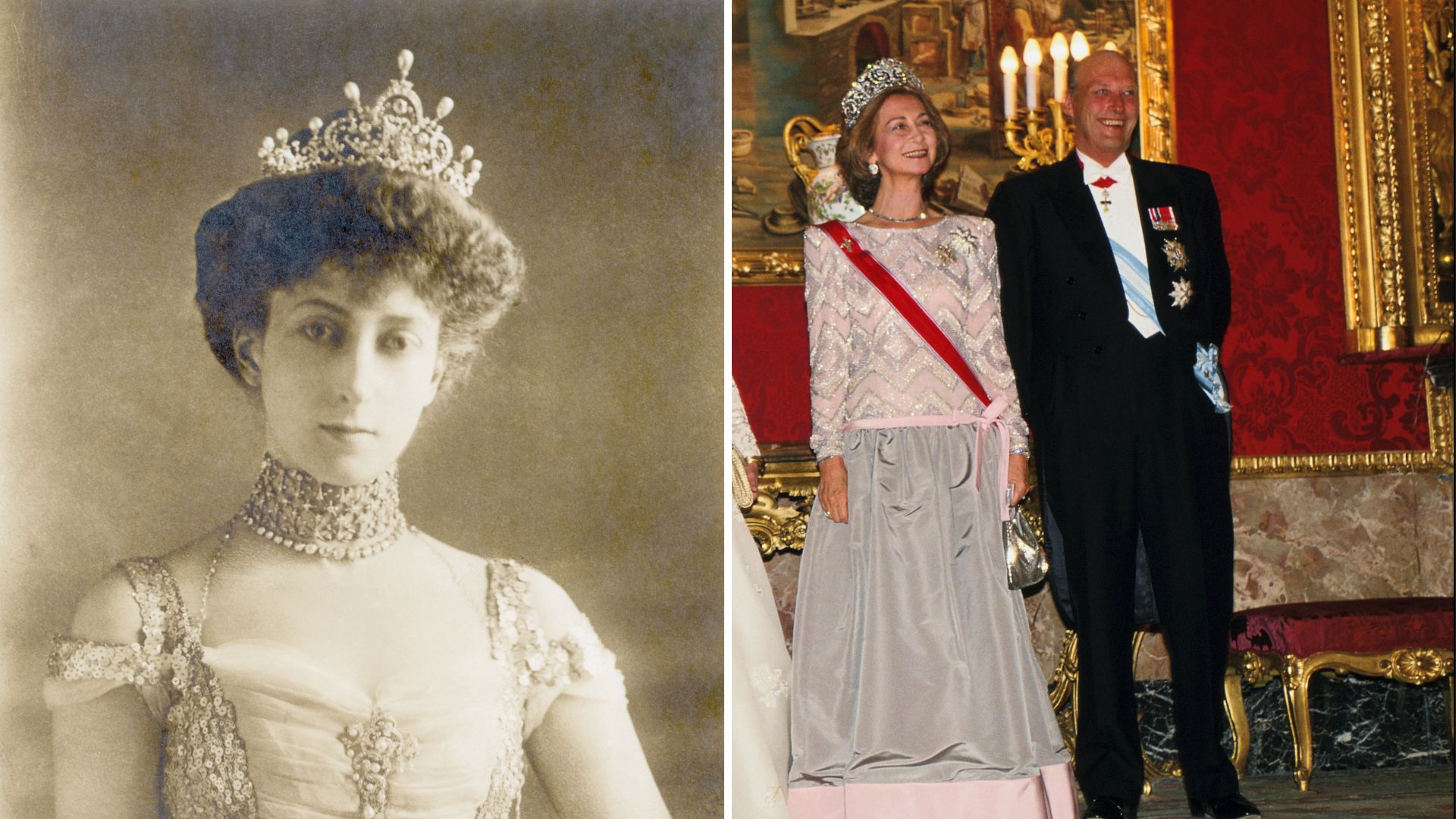
Thought to have been created by the jewellers Carrington and Co in 1896 in time to be worn by Princess Maud of Wales at her wedding to Prince Carl of Denmark, Queen Maud's Tiara was a stunning creation featuring a glittering diamond scroll motif and pear-shaped pearl toppers.
Maud’s grandson, King Harald V of Norway and his wife, Sonja, ascended the throne in 1991. Giving their royal jewels a bit of TLC, they sent the diadem to Garrard, one of the British Royal Family's crown jewellers, in 1995. However, the crown was stolen in an armed heist and has never been recovered.
The Crying Boy paintings
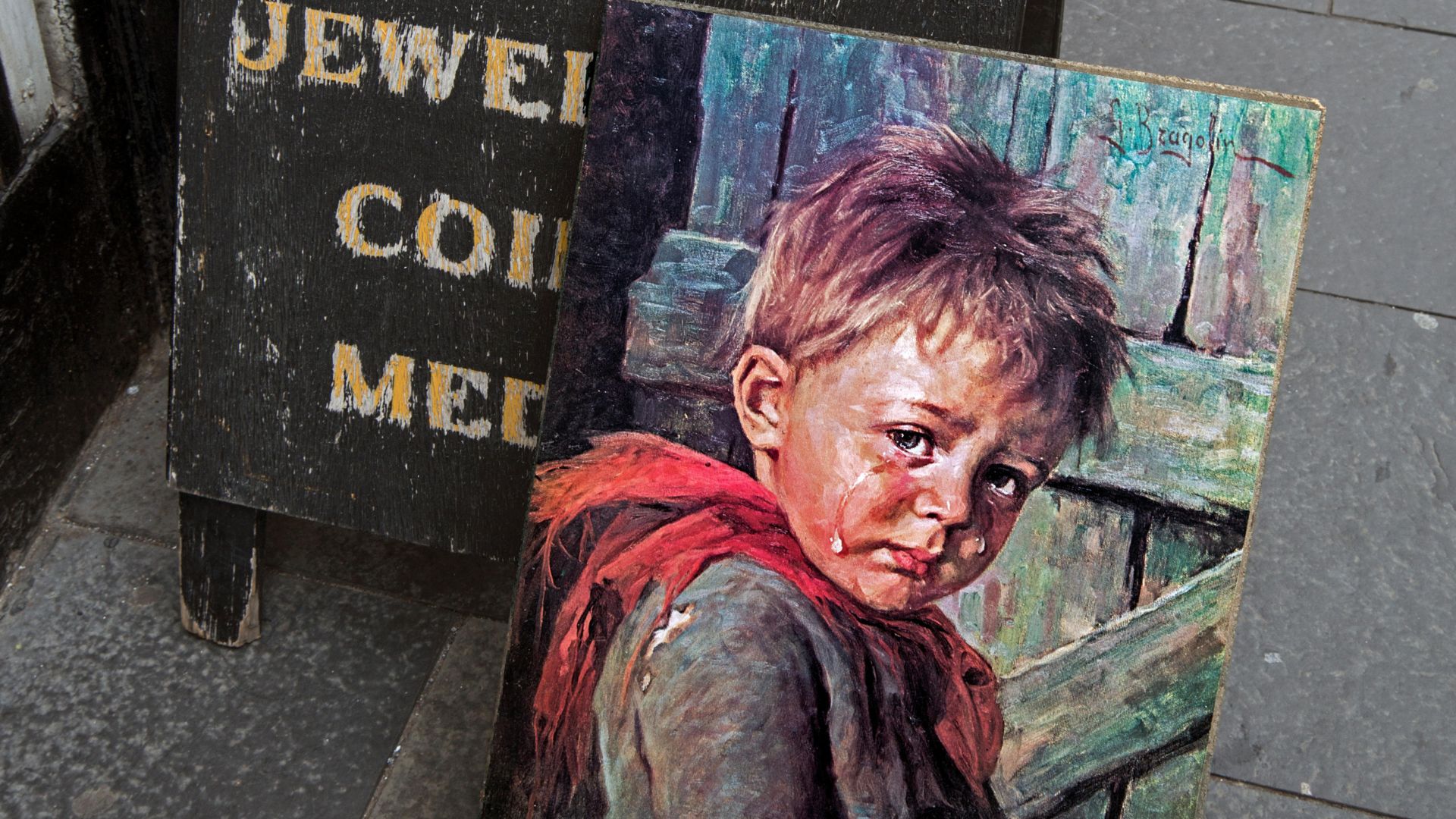
Investing in artwork can be just as lucrative and wise as investing in jewellery, but there's one painting no one should want in their homes.
In the 1980s, the tabloid newspaper, The Sun, led a report that stated firefighters were often witnessing undamaged, unscathed paintings of The Crying Boy - a mass-produced style by artist Giovanni Bragolin - being the only surviving objects from house fires.
By the end of 1985, belief in the painting's curse was widespread enough that The Sun organised mass bonfires of the paintings, sent in by readers.
Pieces of Uluru Rock

Uluru, or Ayers Rock, is the massive sandstone monolith in Australia's Northern Territory.
It is considered sacred to indigenous Australians and is thought to have started forming around 550 million years ago.
Tourists often try to take a piece of the rock as a special artefact, and each year the Uluru National Park’s main office ends up receiving more than 350 packages as people send back the sand or stone they took, with several reports indicating they write letters indicating a string of bad luck that started after bringing the rock home.
The Dybbuk Box

Most people think of glamour and gambling when they think of Las Vegas, but for lovers of the spooky and supernatural, there's a haunted museum which, if you believe, currently houses one of the most cursed objects in the world.
A wooden cabinet, known as the Dybbuk Box, may contain a malicious spirit from Jewish folklore called a Dybbuk. Those who have owned or opened the box have reported strange phenomena like disturbing nightmares, illness, and even death.
Even singer Post Malone seems to have learnt the hard way, with plane emergencies and armed robberies taking place not long after he touched the box during a visit to the Vegas museum.
Oak Island Money Pit

While the treasure hasn't yet been found, or might not even exist, there's a centuries-old lore that captivates people all over the world. The Money Pit is thought to be the location of a legendary treasure on Oak Island in Nova Scotia, Canada.
A curse on the treasure is said to have originated more than a century ago and states that seven men will die in the search for the treasure before it is found. To date, it's widely reported that there have been six accidental deaths connected to excavations on Oak Island.
The Charles Island Curse

Now a protected natural area within Silver Sands State Park, the Charles Island near Connecticut in the United States, has reportedly been at the centre of three different curses over the years.
Captain William Kidd, a notorious pirate, is said to have buried treasure on the island, which he then cursed to protect it from treasure hunters. Other historians and legend-lovers have it that there's a Native American curse on the land, cast by a Paugussett chief who traded it to European settlers and regretted it, while a final legend suggests a sailor buried Aztec treasure on the island to end the curse after stealing it.
Pele's lava rocks

Tourists will want to take keepsakes from their travels, but sometimes, there can be a lack of sensitivity to the native land and cultures. And that is why there is said to be a curse on anyone who takes anything away from Hawaii - Pele's Curse.
Pele is thought to be the goddess of volcanoes and fire who created the islands of Hawaii. She is honoured throughout the islands. Each year, it's reported that tourists return rocks, sand and other items they took from Hawaii, expressing sorrow and regret following a string of bad luck.
The Blue Diamond Affair

While not cursed by spirits or the supernatural, one Thai cleaner's diamond theft led to decades of bad luck and bad relations between two countries.
Labelled the Blue Diamond Affair, in 1989, a Thai cleaner working for a Saudi prince reportedly stole several gems, including an incredibly rare 50-carat blue diamond that was never recovered.
A scandal erupted, with three Saudi diplomats shot dead in Bangkok following the theft and several top policemen accused of being involved. It went unsolved for years, and it took until 2022 for the two nations to broker peace.
The Taylor-Burton Diamond

A perfect, 69.42 carat white diamond first discovered at a De Beers-owned mine in South Africa would later become one of the most famous jewels of all time - the Taylor-Burton diamond.
And, okay, okay, it's not exactly fair to call it cursed, but it's definitely shrouded in bad luck and poor choices after reckless romantic Richard Burton paid Cartier $1.1 million so his two-time wife could have the stone.
Alcoholism and explosive rows followed the couple throughout their two marriages, and after divorcing in 1976, Elizabeth sold the diamond. That should teach people about grand gestures.
The Cullinan Diamond
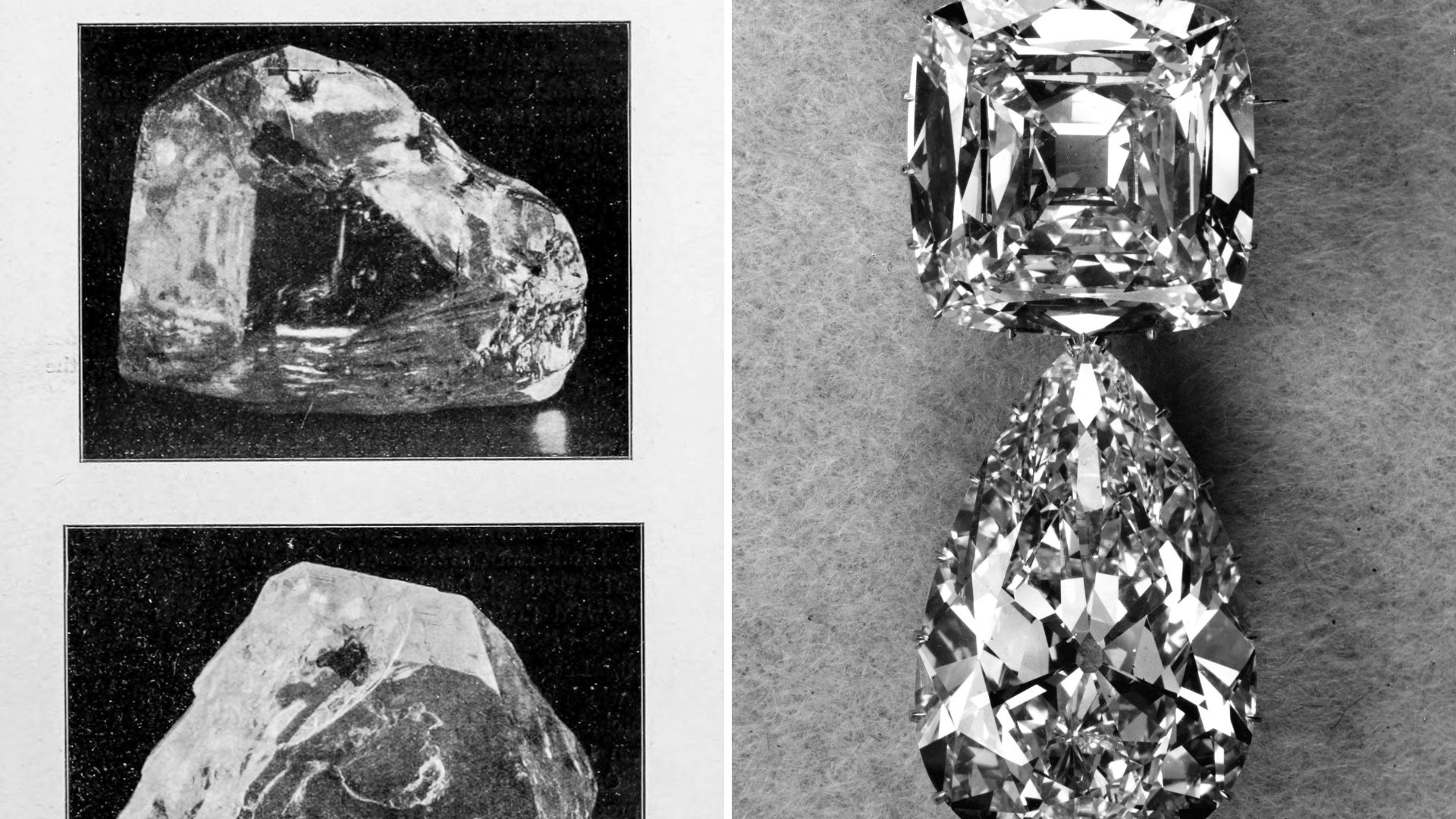
The Cullinan Diamond is one of the most famous diamonds to ever exist. A true wonder of nature, it weighs 3,106 carats and is the largest gem-quality diamond ever discovered.
The massive stone was cut and split into different gems, most notably the Cullinan I (The Great Star of Africa), a pear-shaped diamond weighing 530.2 carats that is part of the British Crown Jewels today, adorning the Sovereign’s Sceptre with Cross.
The other is the Cullinan II (The Second Star of Africa), a 317.4 carat cushioned stone that is part of the Imperial State Crown.
The Cullinan has been involved in some cursed tales over the years. Some believe that those who possess or wear the diamond will bring misfortune. However, in less superstitious stories, there was nearly an accident involving the diamond that spells bad luck. During the cutting process, a piece of the Cullinan Diamond known as the Cullinan III was accidentally sent flying across the room, nearly being lost forever.
It was eventually found, but losing something of that value feels worthy of a curse!

Jack Slater is not the Last Action Hero, but that's what comes up first when you Google him. Preferring a much more sedentary life, Jack gets his thrills by covering news, entertainment, celebrity, film and culture for woman&home, and other digital publications.
Having written for various print and online publications—ranging from national syndicates to niche magazines—Jack has written about nearly everything there is to write about, covering LGBTQ+ news, celebrity features, TV and film scoops, reviewing the latest theatre shows lighting up London’s West End and the most pressing of SEO based stories.